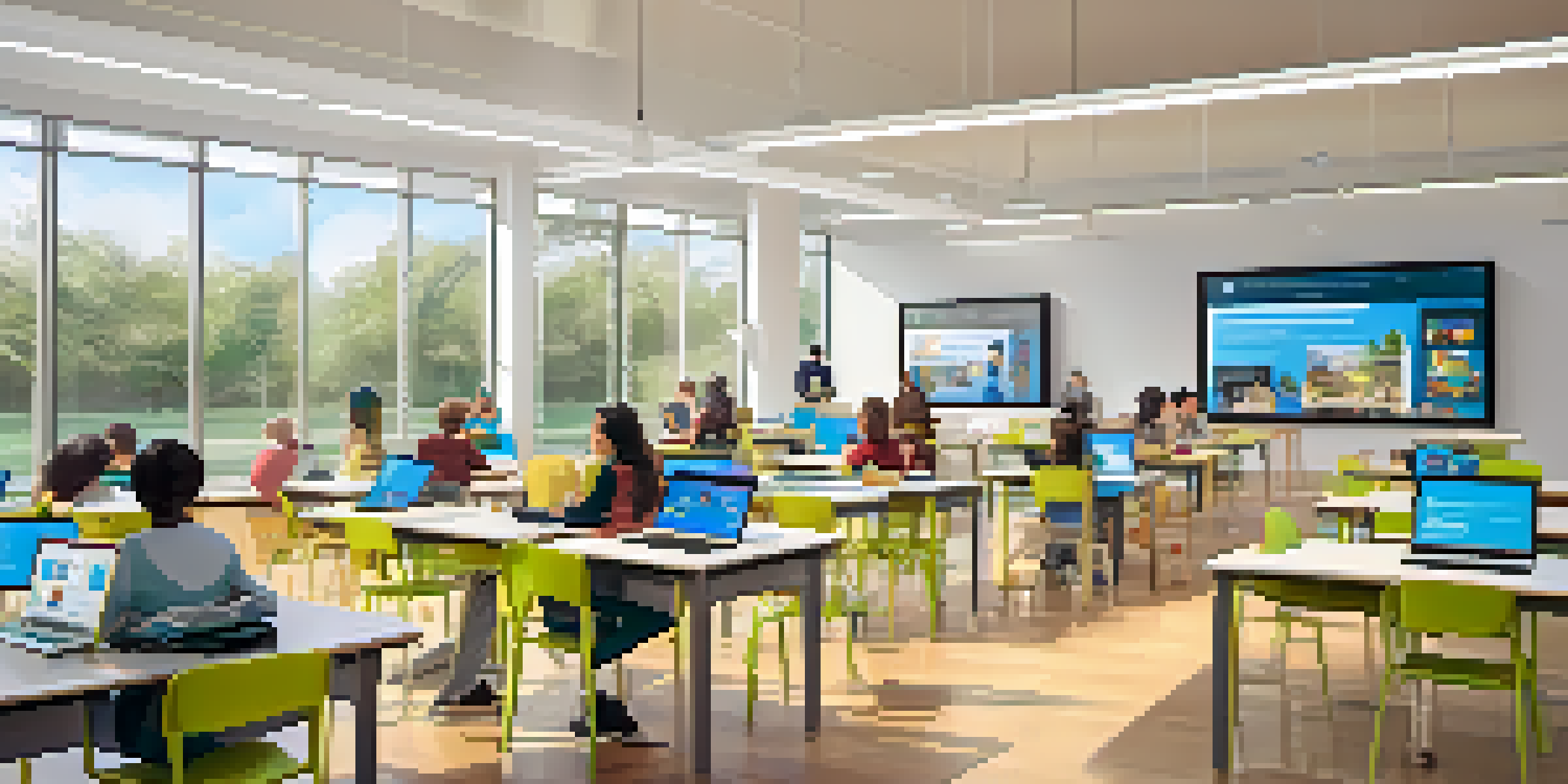Best Practices for Facilitating Discussions in Blended Learning

Understand the Blended Learning Environment
Blended learning combines traditional face-to-face instruction with online components, creating a unique educational landscape. This environment allows for flexibility and personalization, making it essential to understand how to navigate both realms effectively. By acknowledging the strengths of in-person interactions alongside digital tools, educators can create a more engaging discussion framework.
Set Clear Expectations for Participation
Establishing clear guidelines for participation is vital in blended learning discussions. This means outlining what is expected from students in both in-person and online sessions, such as response times and engagement levels. When students understand these expectations, they’re more likely to participate actively and feel responsible for their contributions.
Blend In-Person and Online Learning
Blended learning merges traditional teaching with online tools, enhancing flexibility and personalization in education.
Leverage Technology for Enhanced Engagement
Utilizing technology effectively can significantly enhance student engagement in discussions. Tools like discussion boards, video conferencing, and collaborative platforms foster interaction, even when students are not physically together. By integrating these technologies, educators can create dynamic discussion opportunities that cater to various learning styles.
Encourage Diverse Perspectives and Inclusivity
Diversity in perspectives enriches discussions and promotes a deeper understanding of topics. Educators should encourage students to share their unique viewpoints and experiences, ensuring everyone feels valued. Creating an inclusive environment not only fosters respect but also helps students learn from one another, enhancing the overall learning experience.
Encourage Open Dialogue and Inclusivity
Fostering diverse perspectives and using open-ended questions enrich discussions and deepen understanding among students.
Use Open-Ended Questions to Spark Discussion
Open-ended questions are a powerful tool for fostering meaningful discussions. They encourage students to think critically and articulate their thoughts, rather than simply providing yes or no answers. By asking questions that require deeper reflection, educators can guide conversations that lead to richer insights and learning.
Provide Timely Feedback and Support
Feedback plays a crucial role in the learning process, especially in blended environments. Providing timely and constructive feedback helps students understand their contributions and areas for improvement. This support not only motivates learners but also reinforces the value of their participation in discussions.
Feedback and Adaptation are Key
Providing timely feedback and regularly reflecting on discussion strategies are essential for improving student engagement and learning outcomes.
Foster a Safe and Respectful Learning Environment
Creating a safe space for discussions is essential in blended learning. Students should feel comfortable expressing their thoughts without fear of judgment. By promoting respect and open-mindedness, educators can cultivate an environment where students are more willing to engage and share their ideas.
Reflect and Adapt Discussion Strategies Regularly
Regular reflection on discussion strategies is crucial for continuous improvement. Educators should assess what works and what doesn’t, seeking feedback from students to adapt their approaches. By remaining flexible and responsive, they can enhance the effectiveness of discussions in blended learning settings.